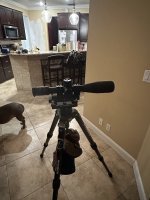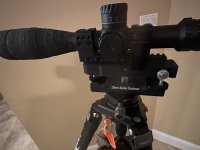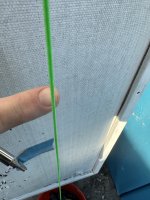So I have a Short Action Customs scope leveling base. That I mount my scope and spur mount to the base. The base is level as well as the spur mount. I put a plum line about 50 yards out in my yard. Now the scope reticle runs along the plum line but at the top of the reticle it looks like it’s on the center of the line and on the bottom of the reticle it looks like it’s on the left side of the line. Almost like a tiny Bit of an offset . I had to set it there so that when track my scope from zero to all the way, as far as it will track it stays on the line. Would that be more important or should I get the reticle to line up perfectly with the plum bob? Thanks Jimmy
Also, this is a brand tangent Theda 7 x 35, I would hope it’s tracking
Also, this is a brand tangent Theda 7 x 35, I would hope it’s tracking





